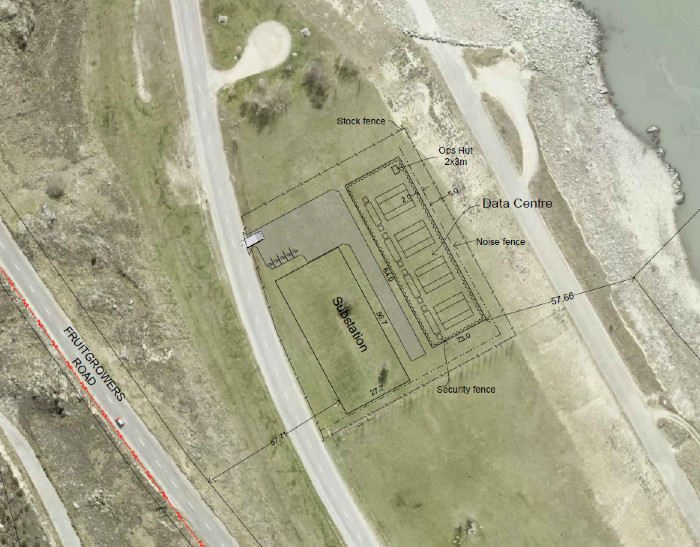Contact Energy announce Clyde datacentre
Rowan Schindler
31 August 2021, 5:45 PM
 Contact Energy to supply ‘flexible’ renewable electricity for a new data centre near Clyde Dam. Photo rendered to show how the landscaping will show the data centre. Photos courtesy Contact Energy.
Contact Energy to supply ‘flexible’ renewable electricity for a new data centre near Clyde Dam. Photo rendered to show how the landscaping will show the data centre. Photos courtesy Contact Energy. Contact Energy (CEN) and its 100%-owned energy solutions business Simply Energy will supply renewable electricity for a datacentre being developed near the Clyde Dam by UK-based digital infrastructure company Lake Parime.
The data centre is owned by Lake Parime, a UK company that has developed renewable energy powered data centres in Scotland from wind farms, they have also expanded into Canada and are building a further 5MW data centre from hydro generation in Canada.
The agreement signed with Lake Parime (lakeparime.com) will see Contact supply 10MW of renewable electricity to operate the planned low-emissions data centre.
It will be used for high-performance computing applications such as machine learning, blockchain, visualisation, modelling and artificial intelligence.
Lake Parime is working with the team at Simply Energy to implement ’demand flexibility’ technology to ramp the data centre’s operations up and down depending on New Zealand’s electricity needs, weather and hydro generation water flows.
Simply Energy director Murray Dyer says the data centre’s electricity load would respond continuously.
“We need to ensure New Zealand’s energy needs continue to be met as demand for renewable energy increases, and as more of our energy is sourced from intermittent renewables like wind and solar.”
The Clyde community will benefit from upgrades to the existing substation with a shared cost structure, resulting in lower lines charges.
There is also an opportunity to put Central Otago in the spotlight for these new and emerging technologies and sectors such as data processing and data science that can support new jobs and opportunities in the area to reduce reliance on Tourism.
During the construction period the datacentre operators will engage and employ local contractors and once operational the datacentre will provide a small number of ongoing highly skilled jobs.
Over time a high performance data centre in Central Otago may start to support new local data science activities wanting close proximity to a data centre.

Plans for the Contact Energy data centre in Clyde.
Contact Energy told The Central App the data centres will be used for industrial scale data processing and high-performance computing applications, such as machine learning, weather models, data visualisations.
This does include cryptocurrency, as well as other data processing such as weather and scientific modelling, AI and machine learning.
Contact CEO Mike Fuge says New Zealand’s high levels of renewable electricity and the lower South Island’s cooler climate were appealing to data centre operators.
“There are environmental and economic advantages to being in this part of the world.
“We expect to see increasing interest from global companies looking for secure, clean, renewable energy sources.”
Mike says attracting new industrial demand was in line with Contact’s strategy.
“This is the first announced project from our pipeline, as we pursue our target to secure over 300 megawatts of market-backed demand opportunities in the lower South Island, reducing New Zealand’s reliance on the Tiwai smelter given its expected closure at the end of 2024.
“And of course, the demand flexibility aspect is aligned with our decarbonisation aspirations as it will reduce the volume of thermal generation needed to back up the national grid in a dry year.”
Following consultation with neighbours, Contact has submitted a resource consent application for the data centre today. It will be located south of the Clyde Dam, alongside the Clutha River.
“We have a range of activity planned to reduce any impact of the data centre,” Murray says. “This includes landscaping, paint colours, night lighting control and design to reduce visual impact and absorb noise.”
If resource consent is approved, the data centre is expected to be up and running by May 2022.
As part of the project, Otago electricity distributor Aurora Energy will build and operate a new substation for the data centre and this will also bolster electricity connectivity and supply security for the local community.
This will form part of Aurora’s considerations as it plans a future substation replacement in the area in 2025.
Advertisement



